Related Research Articles

The National Security Agency (NSA) is a national-level intelligence agency of the United States Department of Defense, under the authority of the Director of National Intelligence (DNI). The NSA is responsible for global monitoring, collection, and processing of information and data for foreign and domestic intelligence and counterintelligence purposes, specializing in a discipline known as signals intelligence (SIGINT). The NSA is also tasked with the protection of U.S. communications networks and information systems. The NSA relies on a variety of measures to accomplish its mission, the majority of which are clandestine. The existence of the NSA was not revealed until 1975. The NSA has roughly 32,000 employees.

In the history of cryptography, the "System 97 Typewriter for European Characters" (九七式欧文印字機) or "Type B Cipher Machine", codenamed Purple by the United States, was an encryption machine used by the Japanese Foreign Office from February 1939 to the end of World War II. The machine was an electromechanical device that used stepping-switches to encrypt the most sensitive diplomatic traffic. All messages were written in the 26-letter English alphabet, which was commonly used for telegraphy. Any Japanese text had to be transliterated or coded. The 26-letters were separated using a plug board into two groups, of six and twenty letters respectively. The letters in the sixes group were scrambled using a 6 × 25 substitution table, while letters in the twenties group were more thoroughly scrambled using three successive 20 × 25 substitution tables.
The Venona project was a United States counterintelligence program initiated during World War II by the United States Army's Signal Intelligence Service, which ran from February 1, 1943, until October 1, 1980. It was intended to decrypt messages transmitted by the intelligence agencies of the Soviet Union. Initiated when the Soviet Union was an ally of the US, the program continued during the Cold War, when it was considered an enemy.

William Frederick Friedman was a US Army cryptographer who ran the research division of the Army's Signal Intelligence Service (SIS) in the 1930s, and parts of its follow-on services into the 1950s. In 1940, subordinates of his led by Frank Rowlett broke Japan's PURPLE cipher, thus disclosing Japanese diplomatic secrets before America's entrance into World War II.

Arlington Hall is a historic building in Arlington, Virginia, originally a girls' school and later the headquarters of the United States Army's Signal Intelligence Service (SIS) cryptography effort during World War II. The site presently houses the George P. Shultz National Foreign Affairs Training Center, and the Army National Guard's Herbert R. Temple, Jr. Readiness Center. It is located on Arlington Boulevard between S. Glebe Road and S. George Mason Drive.
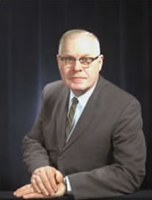
Frank Byron Rowlett was an American cryptologist.
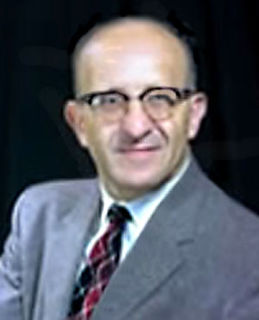
Abraham Sinkov was a US cryptanalyst. An early employee of the U.S. Army's Signals Intelligence Service, he held several leadership positions during World War II, transitioning to the new National Security Agency after the war, where he became a deputy director. After retiring in 1962, he taught mathematics at Arizona State University.
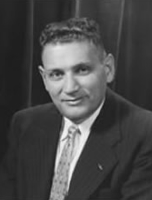
Solomon Kullback was an American cryptanalyst and mathematician, who was one of the first three employees hired by William F. Friedman at the US Army's Signal Intelligence Service (SIS) in the 1930s, along with Frank Rowlett and Abraham Sinkov. He went on to a long and distinguished career at SIS and its eventual successor, the National Security Agency (NSA). Kullback was the Chief Scientist at the NSA until his retirement in 1962, whereupon he took a position at the George Washington University.
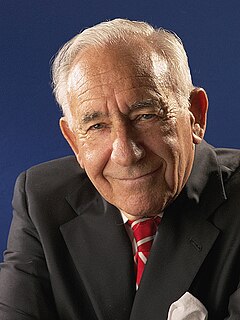
David Kahn is an American historian, journalist, and writer. He has written extensively on the history of cryptography and military intelligence.

The National Cryptologic Museum (NCM) is an American museum of cryptologic history that is affiliated with the National Security Agency (NSA). The first public museum in the U.S. Intelligence Community, NCM is located in the former Colony Seven Motel, just two blocks from the NSA headquarters at Fort George G. Meade in Maryland. The motel was purchased, creating a buffer zone between the high security main buildings of the NSA and an adjacent highway. The museum opened to the public on December 16, 1993, and now hosts about 50,000 visitors annually from all over the world.
The Signal Intelligence Service (SIS) was the United States Army codebreaking division through World War II. It was founded in 1930 to compile codes for the Army. It was renamed the Signal Security Agency in 1943, and in September 1945, became the Army Security Agency. For most of the war it was headquartered at Arlington Hall, on Arlington Boulevard in Arlington, Virginia, across the Potomac River from Washington (D.C.). During World War II, it became known as the Army Security Agency, and its resources were reassigned to the newly established National Security Agency (NSA).
Below is a timeline of notable events related to cryptography.

The Five Eyes (FVEY) is an intelligence alliance comprising Australia, Canada, New Zealand, the United Kingdom, and the United States. These countries are parties to the multilateral UKUSA Agreement, a treaty for joint cooperation in signals intelligence.
Station HYPO, also known as Fleet Radio Unit Pacific was the United States Navy signals monitoring and cryptographic intelligence unit in Hawaii during World War II. It was one of two major Allied signals intelligence units, called Fleet Radio Units in the Pacific theaters, along with FRUMEL in Melbourne, Australia. The station took its initial name from the phonetic code at the time for "H" for Heʻeia, Hawaii radio tower. The precise importance and role of HYPO in penetrating the Japanese naval codes has been the subject of considerable controversy, reflecting internal tensions amongst US Navy cryptographic stations.
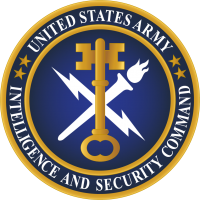
The United States Army Intelligence and Security Command (INSCOM) is a direct reporting unit that conducts intelligence, security, and information operations for United States Army commanders, partners in the Intelligence Community, and national decision-makers. INSCOM is headquartered at Fort Belvoir, Virginia.
Before the development of radar and other electronics techniques, signals intelligence (SIGINT) and communications intelligence (COMINT) were essentially synonymous. Sir Francis Walsingham ran a postal interception bureau with some cryptanalytic capability during the reign of Elizabeth I, but the technology was only slightly less advanced than men with shotguns, during World War I, who jammed pigeon post communications and intercepted the messages carried.

Genevieve Marie Grotjan Feinstein was an American mathematician and cryptanalyst. She worked for the Signals Intelligence Service throughout World War II, during which time she played an important role in deciphering the Japanese cryptography machine Purple, and later worked on the Cold War-era Venona project.

Juanita Moody was an American cryptographer, intelligence analyst and National Security Agency (NSA) executive. She worked for the Signals Intelligence Service (SIS) and NSA from 1943 until 1976.

Mary Louise Prather was an American spy and one of the pioneering women within the field of cryptography. Most of her work in the field of cryptography was completed during World War II and early in the Cold War era.
References
- ↑ Wolfgang Saxon (22 June 1995). "Arnold I. Dumey, 88, Long a Leading Cryptographer for the U.S." The New York Times .
- ↑ Oral history interview with Arnold Dumey, Charles Babbage Institute, University of Minnesota.
- ↑ Dumey, A. I. (1956). Indexing for rapid random-access memory. Computers and Automation 5 (12), 6-9
- ↑ James Bamford, Puzzle Palace, p. 428.